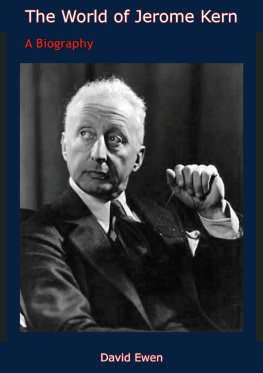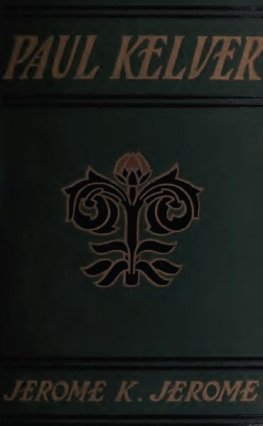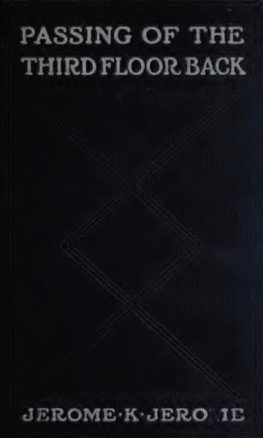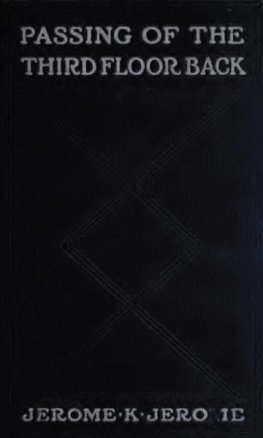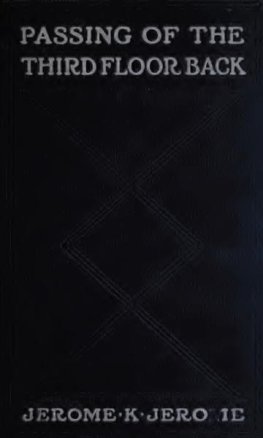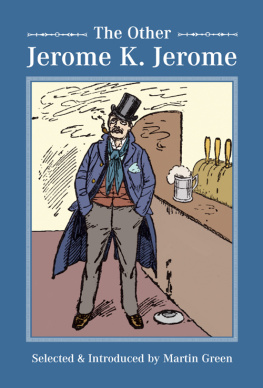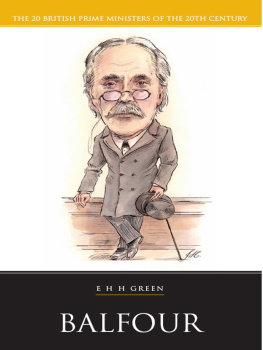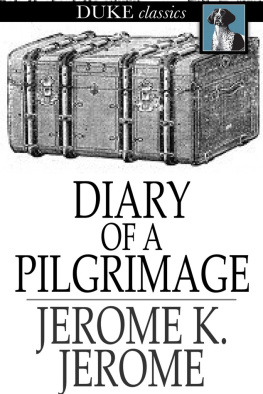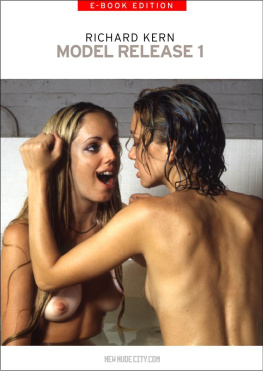David Ewen - The World of Jerome Kern
Here you can read online David Ewen - The World of Jerome Kern full text of the book (entire story) in english for free. Download pdf and epub, get meaning, cover and reviews about this ebook. year: 2020, publisher: Barakaldo Books, genre: Non-fiction. Description of the work, (preface) as well as reviews are available. Best literature library LitArk.com created for fans of good reading and offers a wide selection of genres:
Romance novel
Science fiction
Adventure
Detective
Science
History
Home and family
Prose
Art
Politics
Computer
Non-fiction
Religion
Business
Children
Humor
Choose a favorite category and find really read worthwhile books. Enjoy immersion in the world of imagination, feel the emotions of the characters or learn something new for yourself, make an fascinating discovery.
- Book:The World of Jerome Kern
- Author:
- Publisher:Barakaldo Books
- Genre:
- Year:2020
- Rating:3 / 5
- Favourites:Add to favourites
- Your mark:
- 60
- 1
- 2
- 3
- 4
- 5
The World of Jerome Kern: summary, description and annotation
We offer to read an annotation, description, summary or preface (depends on what the author of the book "The World of Jerome Kern" wrote himself). If you haven't found the necessary information about the book — write in the comments, we will try to find it.
The World of Jerome Kern — read online for free the complete book (whole text) full work
Below is the text of the book, divided by pages. System saving the place of the last page read, allows you to conveniently read the book "The World of Jerome Kern" online for free, without having to search again every time where you left off. Put a bookmark, and you can go to the page where you finished reading at any time.
Font size:
Interval:
Bookmark:


Barakaldo Books 2020, all rights reserved. No part of this publication may be reproduced, stored in a retrieval system or transmitted by any means, electrical, mechanical or otherwise without the written permission of the copyright holder.
Publishers Note
Although in most cases we have retained the Authors original spelling and grammar to authentically reproduce the work of the Author and the original intent of such material, some additional notes and clarifications have been added for the modern readers benefit.
We have also made every effort to include all maps and illustrations of the original edition the limitations of formatting do not allow of including larger maps, we will upload as many of these maps as possible.
THE WORLD OF JEROME KERN
A BIOGRAPHY
BY
DAVID EWEN
Contents
With THE WORLD OF JEROME KERN, David Ewen adds another triumph to his brilliant musical biographies, among them A Journey to Greatness: The Life and Music of George Gershwin , and Richard Rodgers . Called musics interpreter to the American public, Mr. Ewen is also the author of the Complete Book of the American Musical Theater, numerous biographies for young people, and many standard reference works in the field of serious music. He has been a frequent contributor to the music sections of leading magazines and newspapers.
To Bob,
the song is you .
Here were warmth, enchantment,
laughter, music. It was Anodyne.
It was Lethe. It was Escape.
It was the Theater.Edna Ferber
Wherever possible, I went for my biographical material to firsthand sources. On each of three visits to Beverly Hills I had several sessions with Kerns widow (Mrs. George Byron) and Kerns daughter (Mrs. Jack Cummings); during my third visit they read the first draft of my manuscript and once again contributed valuable information together with advice and criticism.
Many others have also been highly co-operative in supplying me with documents, letters, clippings, programs, reminiscences, and so forth. Among those to whom I would like particularly to express my indebtedness are: Guy Bolton; Arthur Freed; Ira Gershwin; Oscar Hammerstein II; Otto Harbach; Andr Kostelanetz; Kerns business manager, William Kron; Kerns cousins, Walter and Elsie Pollak; Kerns New York attorney, Howard Reinheimer; Richard Rodgers; P. G. Wodehouse; and Kerns boyhood friend, Maurice Wolff.
The roster of those contacted by mail, telephone, or wire for specific bits of information or for substantiating facts is much too long to list here; but such help cannot pass without an expression of gratitude. Gratitude must also be expressed for various favors: to Mrs. Byron, Mrs. Cummings, Walter Pollak, Lynn Farnol, Ira Gershwin, P. G. Wodehouse, Guy Bolton for valuable photographs; to Arnold Shaw of Edward B. Marks Music Corporation for a copy of Kerns first published piece, At the Casino; to the Drama Room of the New York Public Library for the availability of its remarkable collection of newspaper clippings and programs.
Permission to quote copyrighted material was granted by Simon and Schuster for several passages from The Jerome Kern Song Book edited by Oscar Hammerstein II, Lyrics by Oscar Hammerstein II, and Bring On the Girls by P. G. Wodehouse and Guy Bolton; by Doubleday & Company and Edna Ferber for several lines from Miss Ferbers autobiography, A Peculiar Treasure ; and by Theatre Arts Books for a quotation from Cecil Smiths Musical Comedy in America , copyright 1950 by Cecil Smith.
D. E.
Little Neck, New York
In a uniquely productive career in the American musical theater that spanned the years from 1904 to 1945, Kern wrote the music for 104 stage and screen productions. Many of these productions were run of the mill; but others helped change the destiny of the musical stage. For these 104 productions he created over one thousand songs. Some are stereotypes. Many never became popular, and still represent terra incognita even for Kern connoisseurs, but they represent a world of melodic grace and charm whose exploration could prove most rewarding. Almost a hundred of these songs are classics, whose survival in the living repertory of American music seems assured; and no less than fifteen are among the greatest commercial successes ever realized either on Broadway or in Tin Pan Alley.
Perhaps as good a way as any to measure Kerns stature as a composer is to use the yardstick of his influence on two other giants of the contemporary musical theater and American popular music.
One was George Gershwin. Gershwin, at sixteen, was already a serious piano student and a passionate enthusiast of American popular music when he attended his aunts wedding at the Grand Central Hotel in New York. The band struck up two songs that made him stop in his tracks. As he listened, the songs represented to him a new world of music. Here was a radical departure in style, mood, and idiom from anything then being circulated as popular music. Gershwin rushed to the bandstand to uncover the identity of both the songs and their composer. The songs were They Didnt Believe Me and Youre Here and Im Here. And the composer was Jerome Kerna name Gershwin was now hearing for the first time.
From then on, and until he achieved his own creative identity, Gershwin used Kern as a model and an inspiration. He himself put it this way: I followed Kerns work and studied each song he composed. I paid him the tribute of frank imitation, and many things I wrote at this period sounded as though Kern had written them himself.
The other giant early influenced by Kern was Richard Rodgers. He was also a mere youngster when Kerns music was first impressed upon his consciousness. As an avid theatergoer from his childhood on, Rodgers had been an admirer of Victor Herbert and other American composers of European-type operettas then crowding the American stage when, in 1916, he saw Kerns Very Good, Eddie . He himself described as shattering the impact that show made upon him, and has confessed that he went to see it a dozen times. He lost all interest in operettas, even those by Victor Herbert, as he sought out musicals as authentically American in book and score as some of the Jerome Kern productions were.
The influence of the hero on such a hero-worshiper is not easy to calculate, but it was a deep and lasting one, says Rodgers. His less successful musical comedies were no less important to a listener of thirteen or fourteen. A large part of one winter most of my allowance was spent for a seat in the balcony listening to Love o Mike . Rodgers might have added that, like young Gershwin, he soon started writing songs in Kerns style.
Gershwin and Rodgers openly acknowledged their indebtedness to Kern; so have other important popular composers, including Arthur Schwartz and Harold Arlen. Several composers may be more reticent about making such a confession. But whoever has produced songs in Tin Pan Alley or labored within the musical theater in the past half-century has inescapably profited from Kern.
Kern published his first piece of music as far back as 1902; contributed his first songs to an American stage production in 1904; and achieved his first song hit in 1905. In 1905 Irving Berlin was singing other peoples ballads in the saloons of the Bowery; his first published song, only a lyric at that, was still about two years off. In 1905 Richard Rodgers was three, Vincent Youmans was seven, George Gershwin, seven, and Cole Porter twelve. In 1905 the most successful Broadway composer was Victor Herbert, whose heart and pen flowed over with some of the most lovable melodies heard on our stage. But Herberts style was more European than American, and his music was heard in plays closely patterned after European operettas. In 1905 the two big musical productions on Broadway were both foreign-styled operettas: Raymond Hubbells Fantana and Victor Herberts Mlle. Modiste . The big song hits of that year were Egbert Van Alstynes In the Shade of the Old Apple Tree, Paul Dressers My Gal Sal, George M. Cohans Marys a Grand Old Name, Harry von Tilzers Wait Til the Sun Shines, Nellie, and Ernest R. Balls Will You Love Me In December as You Do in May? (the last to lyrics by James J. Walker then state senator, and many years later New Yorks dapper mayor). All these ballads had sentimental appeal and charm; but none revolutionized the accepted styles and procedures in Tin Pan Alley.
Next pageFont size:
Interval:
Bookmark:
Similar books «The World of Jerome Kern»
Look at similar books to The World of Jerome Kern. We have selected literature similar in name and meaning in the hope of providing readers with more options to find new, interesting, not yet read works.
Discussion, reviews of the book The World of Jerome Kern and just readers' own opinions. Leave your comments, write what you think about the work, its meaning or the main characters. Specify what exactly you liked and what you didn't like, and why you think so.

